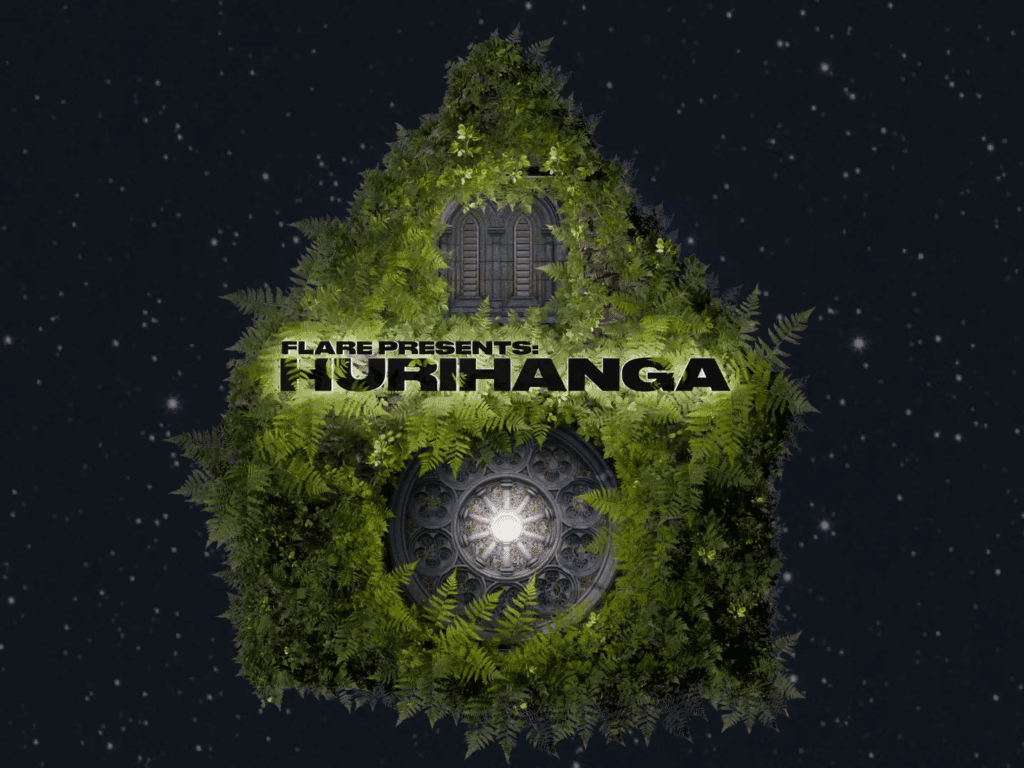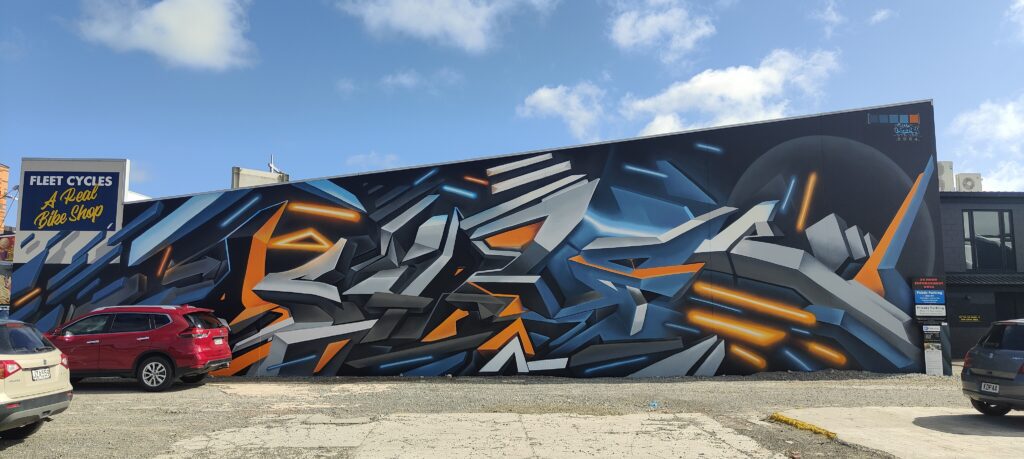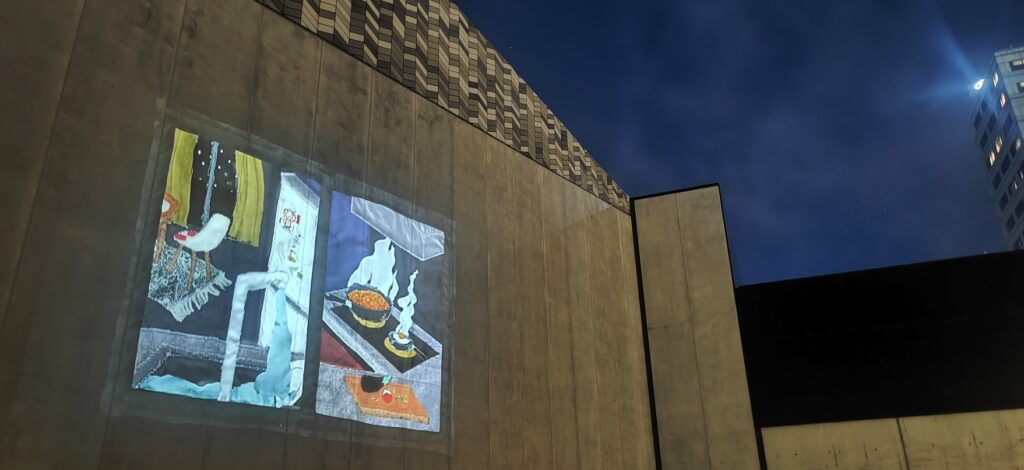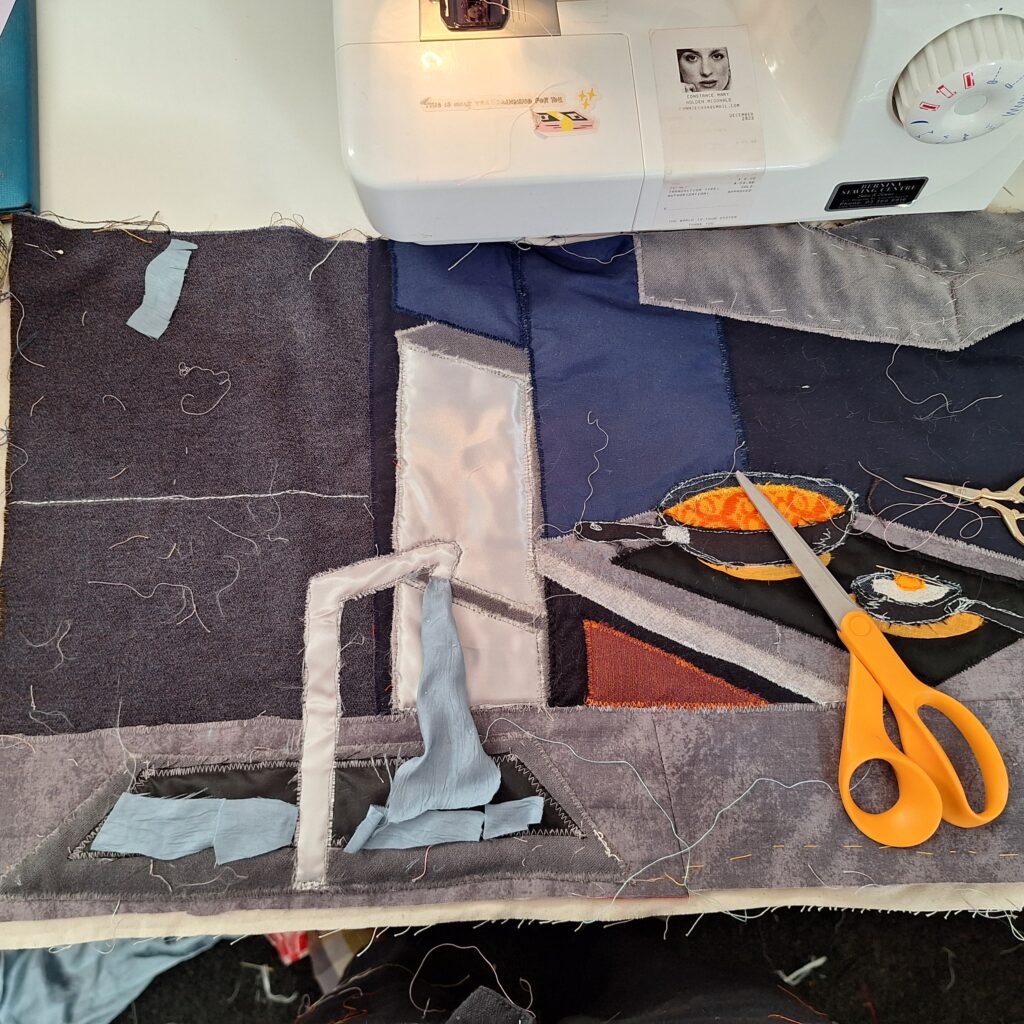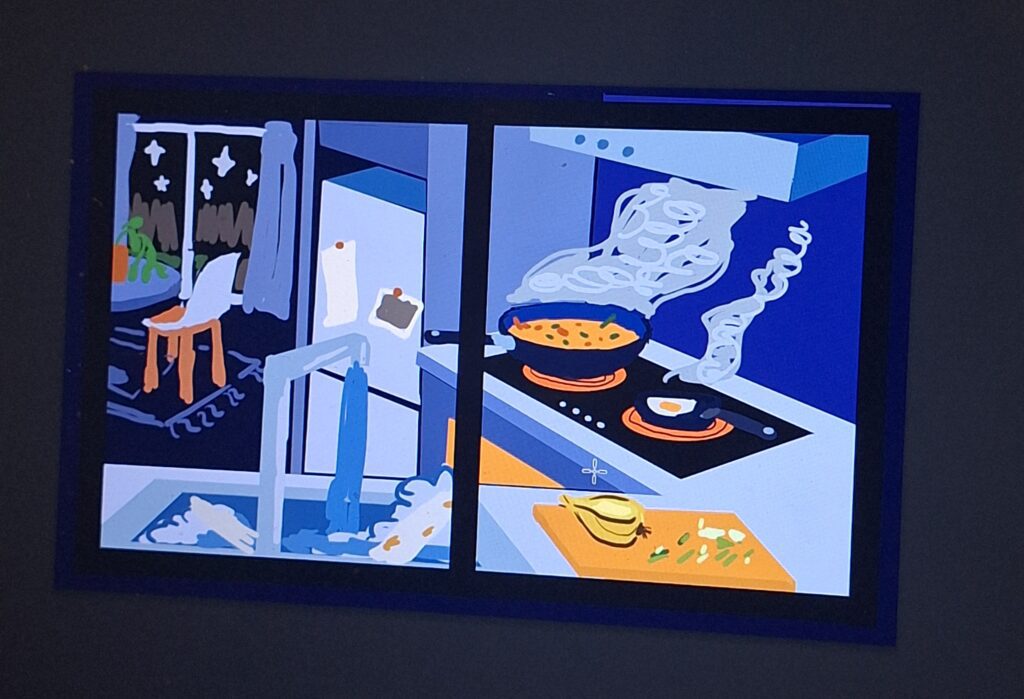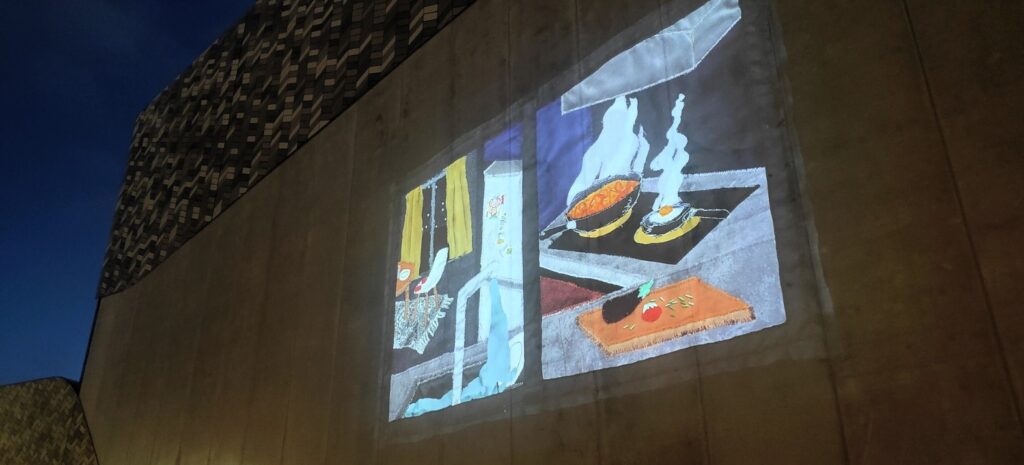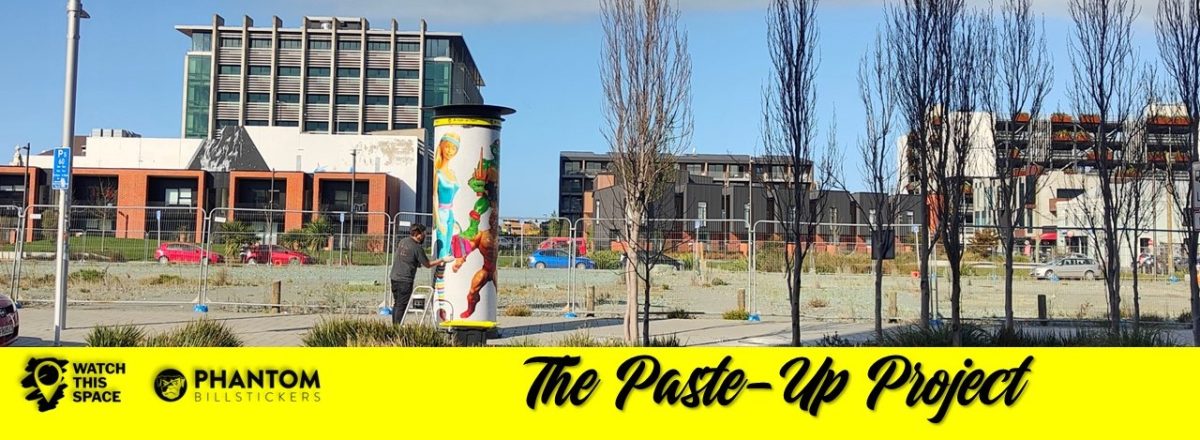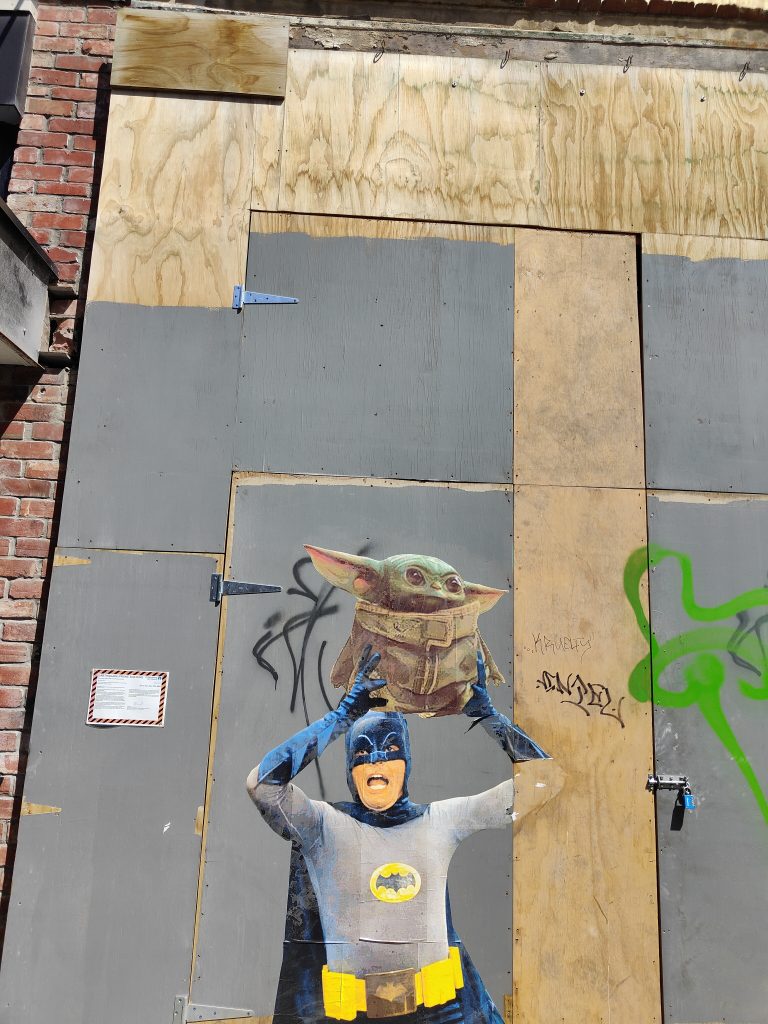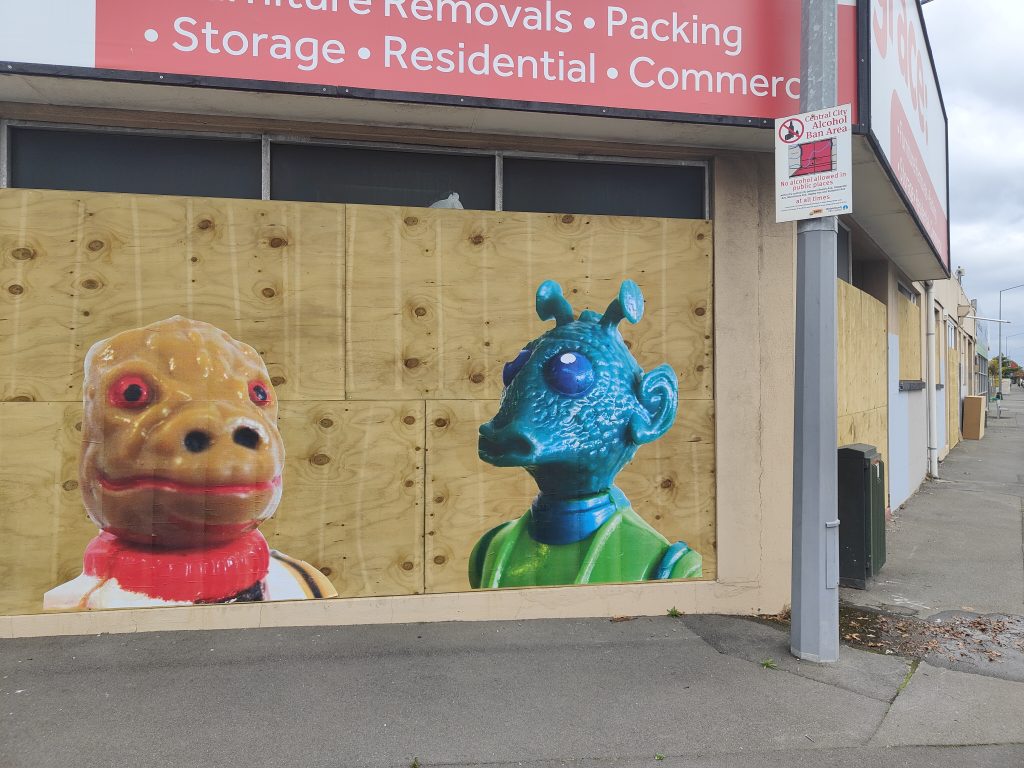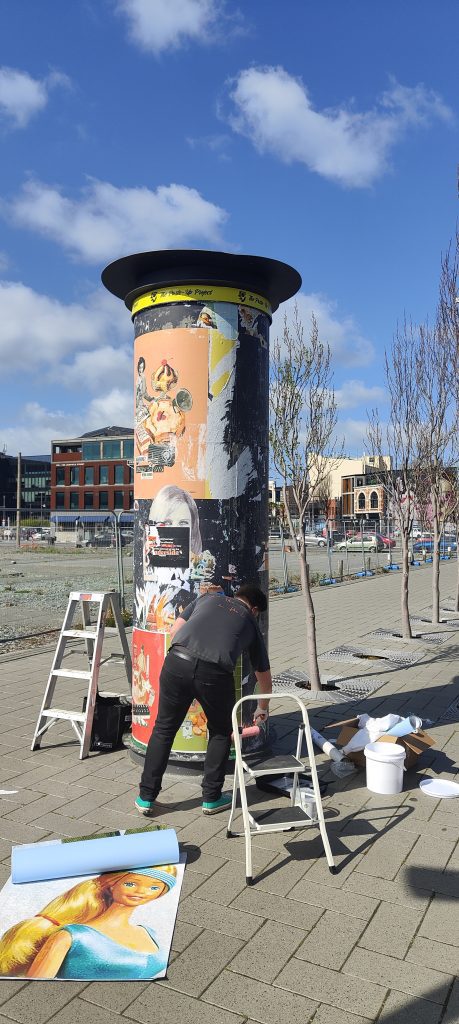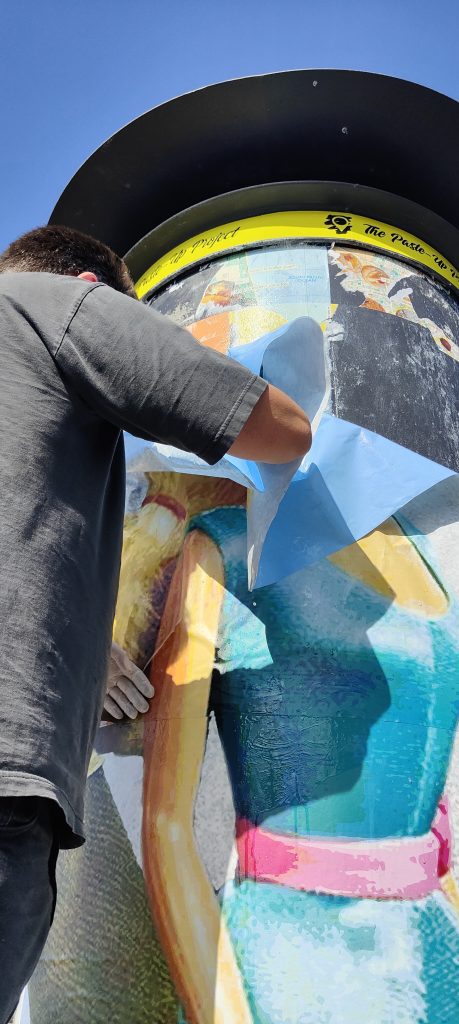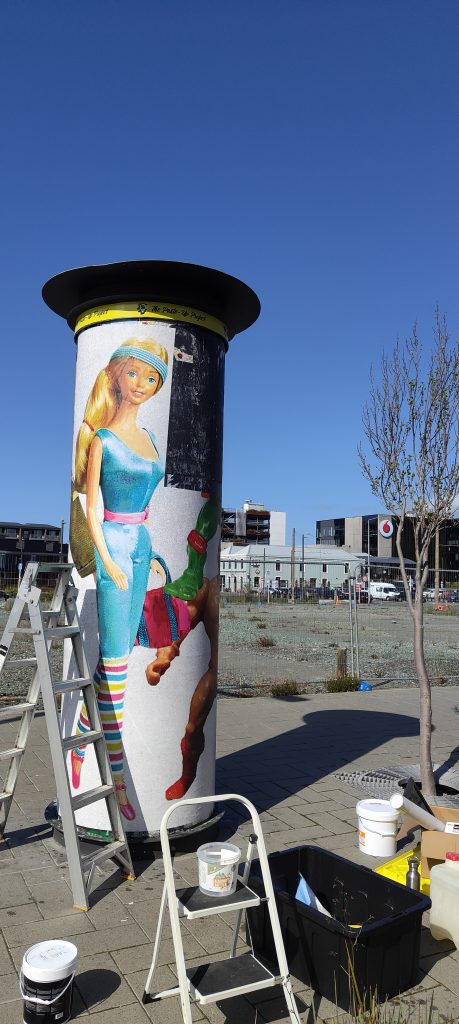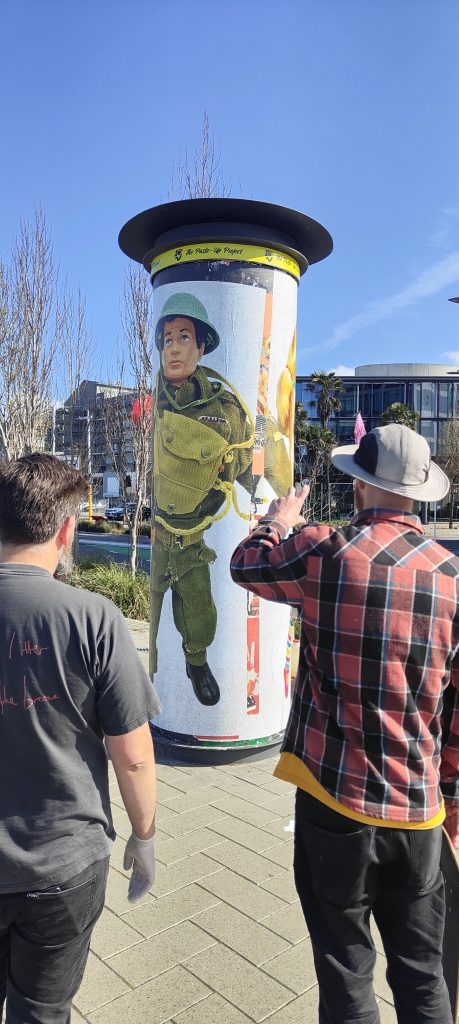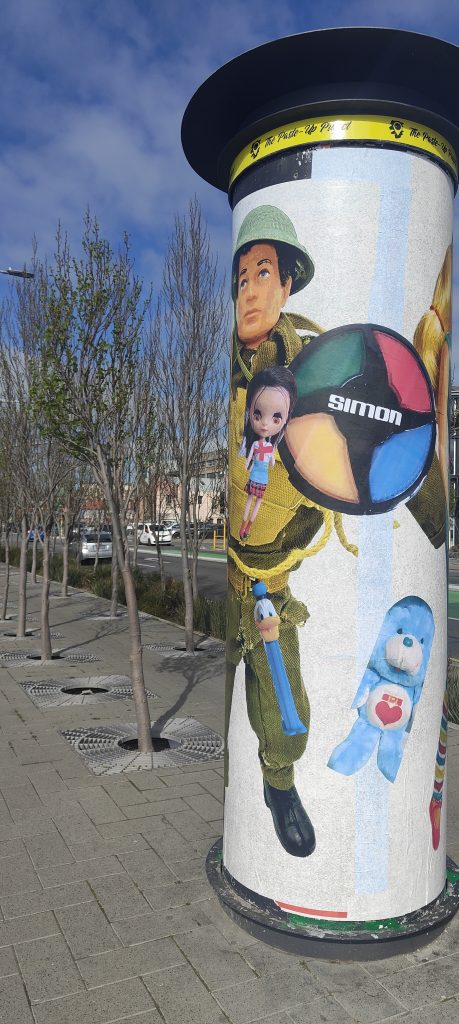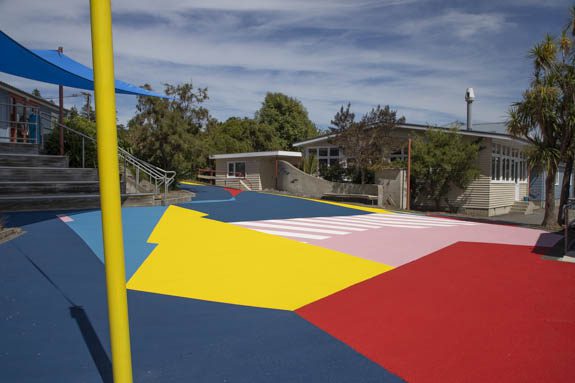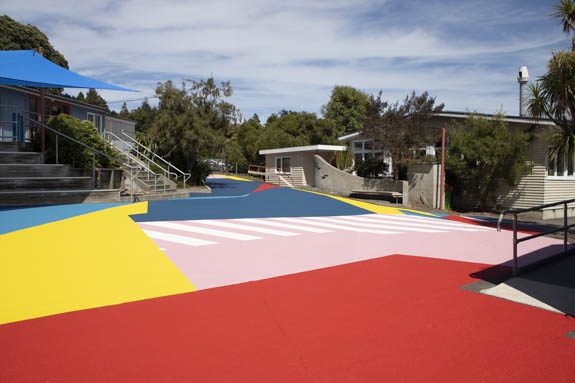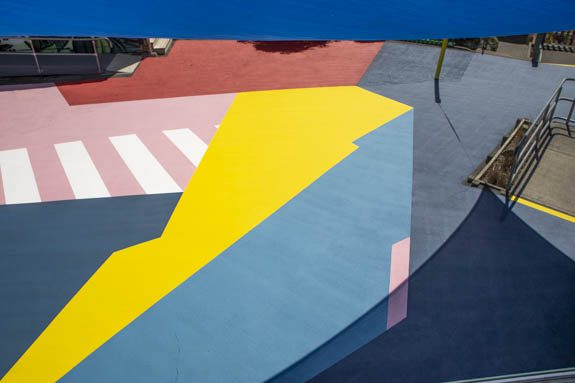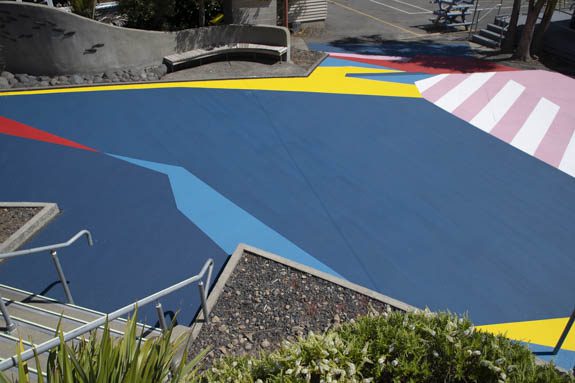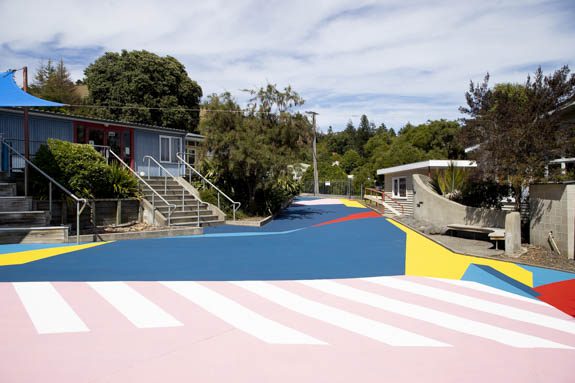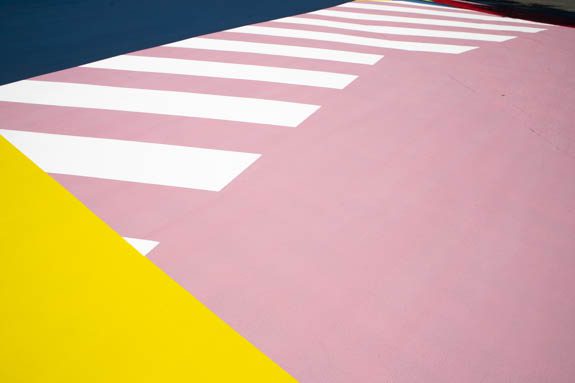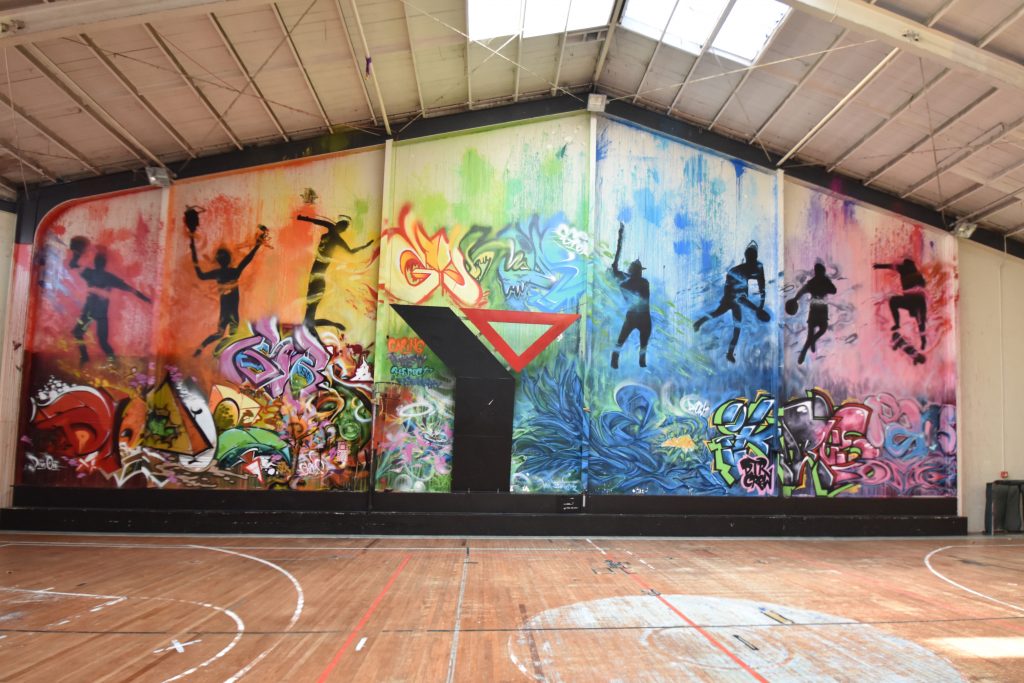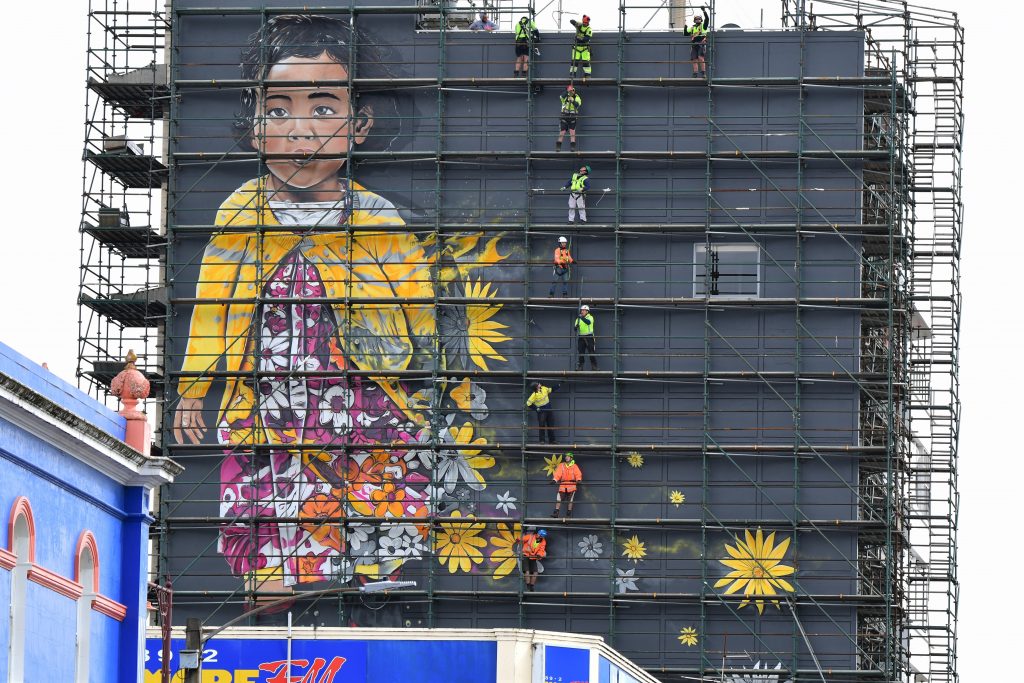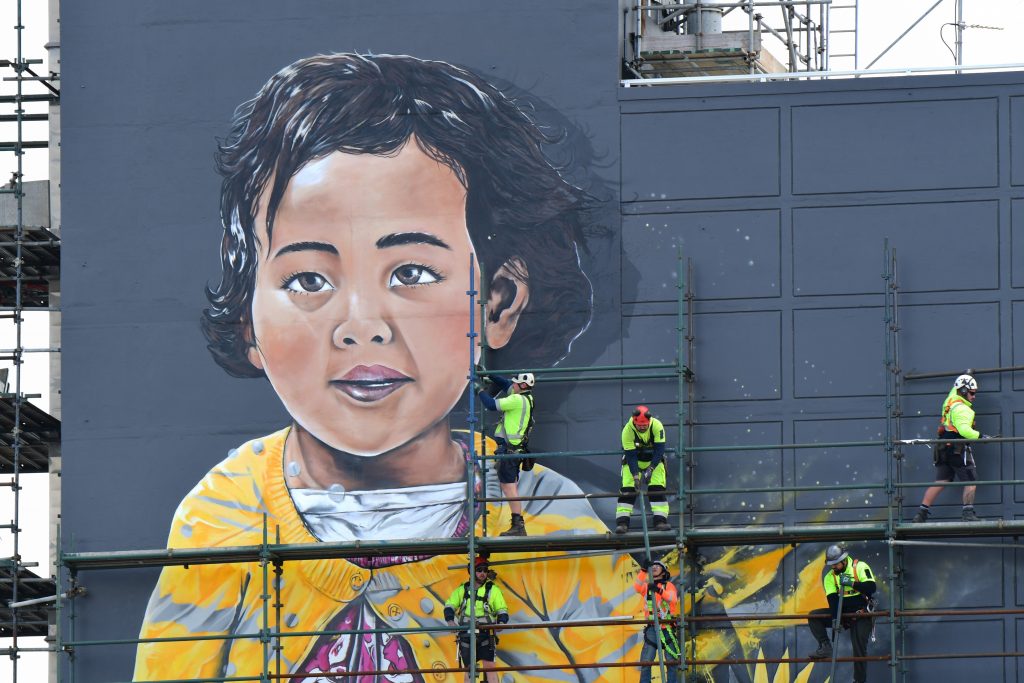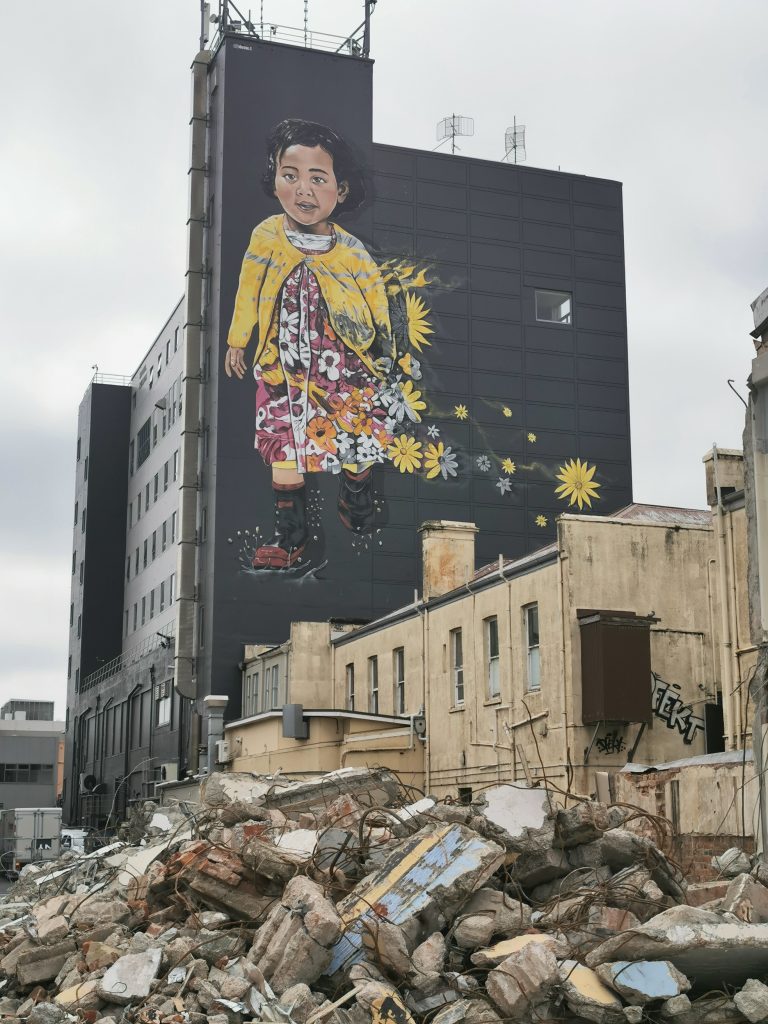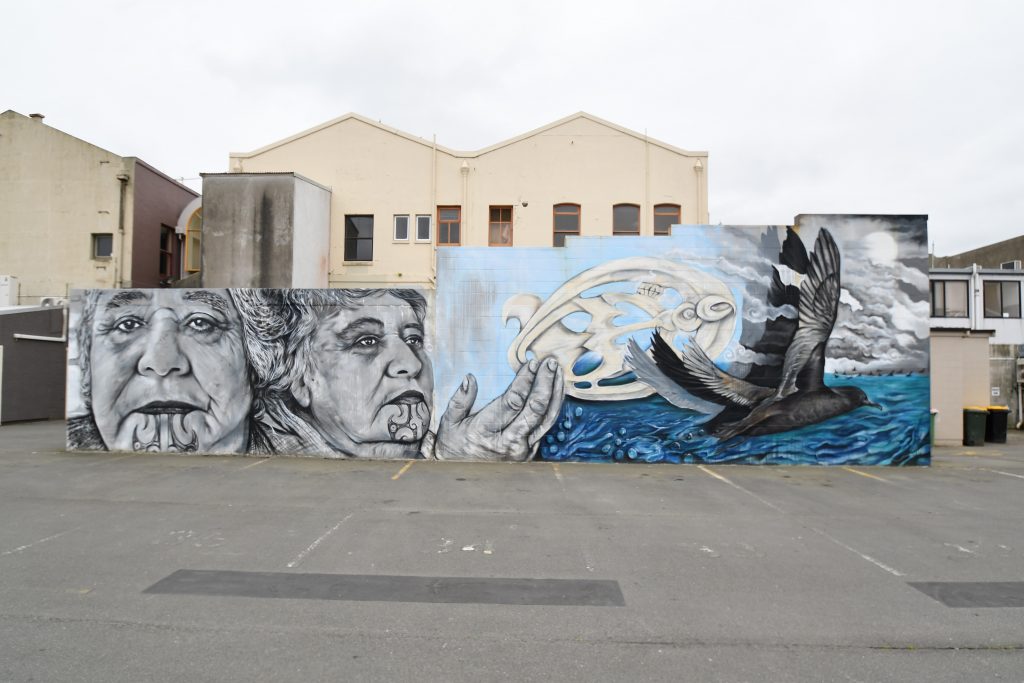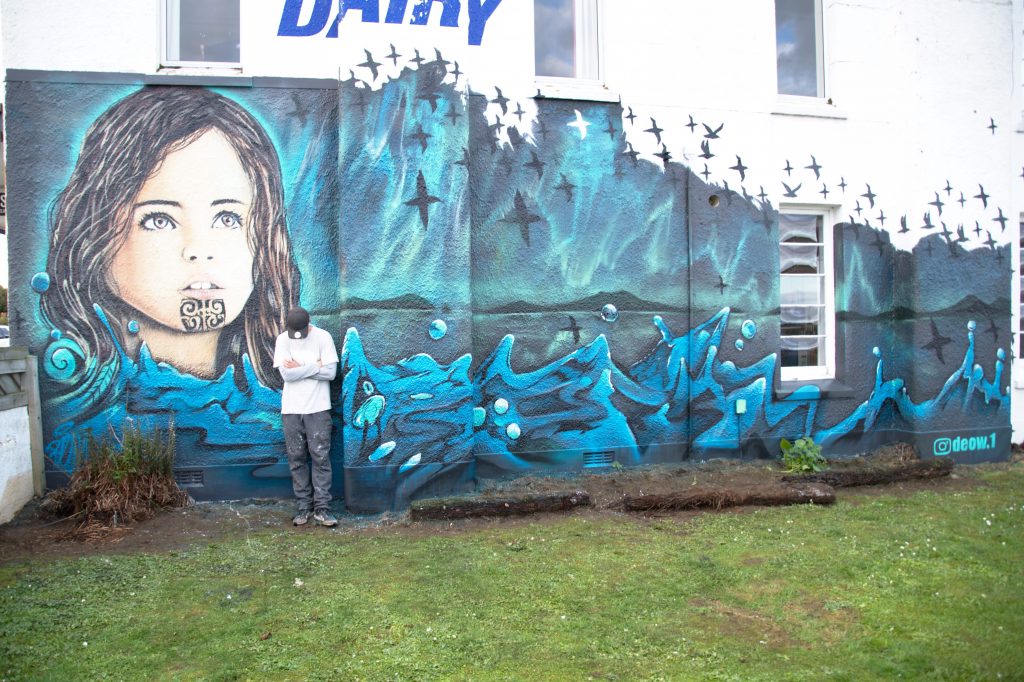
Good things take time – that’s what they say, anyway. It’s hard to believe that it was mid-March when we sat down with Melbourne artist Drez to reflect on his whirlwind visit to Ōtautahi for the Flare Street Art Festival, where does the time go? With a lot going on, it has taken us a while to finally publish our conversation (conducted in a car in Phillipstown just before Drez departed for the airport!), but we know it is worth the wait! After getting to know Drez as he painted his striking mural on St Asaph Street, it was a privilege to take the chance to dive a bit deeper into his practice, his influences and the comparative cultural and historic landscapes of Aotearoa and Australia. A thoughtful and reflective presence, Drez reveals the importance that he places on his work’s ability to engage its audience through colour and form, eliciting a direct connection between art and experience…
On the day that you’re about to leave, its great to finally get to have a chat – I guess we should start with how you have enjoyed your time in Ōtautahi, Christchurch…
Drez: I’ve really enjoyed it. It’s been a bit of a whirlwind, pretty chock-a-block with painting and then one hour to do something else and then sleeping and then painting again, you know, just rinse and repeat. But it’s been really nice. Everybody has been super friendly, people have responded really well to the mural. All of the festival hosting has been great, and we’ve met a lot of good people. All things considered, it’s been a good time.
This is your first time in the city, right? Did you look into Ōtautahi before coming over or have you learned on the ground?
Drez: I did a little bit of research into mainly just looking at the earthquakes and how that affected the city. I guess more broadly I did a bit more research on New Zealand, the history of the population that’s been here and pre-colonial and post-colonial sort of times.
Is that something that you would normally do when you’re traveling or is that something that has kind of been fed into you as an artist, that need to explore those types of contexts? It’s an increasing responsibility for artists to know about the environments that they’re going to and working in, right? Knowing that you are here for a short span and would be under time pressure to complete the mural, does that add to that responsibility to have a bit more of an understanding in advance?
Drez: To be honest, not really. Like, I think for me, my work is not really narrative driven or political or about social stories or the environment as such. It’s more focused on art and colour and architecture and tropes that don’t really lean into the social environment. So, in terms of directly relating to my work, it’s not hugely relevant. But for me personally, I am super interested, and I think it’s important when you go to other locations to know about the culture. And there’s obviously a correlation between New Zealand and Australia and the First Nations’ history in Australia and the pre-colonial history in New Zealand as well. So I thought, you know, I felt like there was a level of responsibility to understand a bit more and not just come in and be like, great, I’m just going to paint a wall and then piss off home and keep doing what I’m doing without caring about where I’ve actually been or any of the important aspects of where I’ve been.
You know, I think for both Australia and Aotearoa, we’re at really important times in terms of the discourse around indigeneity and the legacy of colonialism and the responsibilities to address issues that have faced indigenous cultures in both countries. Obviously, as you say, your work is not necessarily centred on that, but how do you sort of see the relationship between the two countries. Have you noticed anything while you’ve been here that sort of signifies our differences or similarities?
Drez: I’ve definitely noticed a bit. I mean, I think obviously there’s a similar time period as to when colonial settlement happened between New Zealand and Australia. So, in terms of the age of our colonial nations, it’s similar, it is quite different to America that’s got a couple of hundred years on top of us and other places that have even more extensive time periods. So, I think in terms of the age of our countries, there is a similarity, which is why it’s interesting to see how that post colonialisation has unfolded. I think there definitely is a difference and a more significant integration of First Nations culture in New Zealand than there is in Australia, lots of really simple things. I feel like definitely in Melbourne, there isn’t anywhere near as much representation. When you get up north there is more, but in Melbourne and Sydney, the big cities, there isn’t as much representation. And I think simple things like, you know, using. Using language pretty regularly in emails and communications and seeing lots of non-English language on signs, that’s a pretty clear sign of there being more than one culture in a space. That representation is really important for the celebration of culture. And yeah, I think Australia, and definitely Melbourne, is a bit behind in that respect.
It’s interesting. As a city, Christchurch holds this reputation as being the most quintessentially colonial city in Aotearoa. And yet of course, the earthquakes have shaken loose a lot of that and have allowed us to recognize the need for better reflection and representation of our indigenous histories and identities in the cityscape. You might have noticed some of that in the architecture and the signage and the public artworks that you have come across. There’s still obviously a long way to go. In your experience, whether or not it’s engaging directly with those narratives, is art in the streets a way to break down accepted or perceived constructions, to explore new ways of thinking? Do you see your work falling into that context, that even if it’s not explicitly political, it’s a rethinking of public space?
Drez: Yeah, I think so. I mean definitely street art and public art has that ability to create representation and engage in the representation of different stories. The more that you see that in signage and architecture and murals and public art, the more that culture is celebrated and the more that culture is less othered, as opposed to very colonial spaces that are all about the more colonial architecture and imagery and signage and language and places where it totally removes any presence of a non-colonial culture. So yeah, definitely public space and the imagery in it plays a massive role in that experience for somebody that’s not from a location. And I think, in terms of my work, it definitely speaks to thinking about using public space in a, I guess, less traditional way. But again, my work really doesn’t speak to these cultural narratives. It speaks more to the narrative of art and street art and contemporary art and the cultural divide between contemporary and urban art. So, I guess it reaches more to that space and that sort of divide of what is highbrow and what is lowbrow, and what spaces are to be used in different ways. I think it sometimes loses a little bit of context when the productions are really high scale and you know, on much larger buildings or there’s lots of infrastructure put in place in terms of access and assistance and these sorts of things and council permits and stuff to do it. But definitely when I was doing more illegal works, it really spoke to that sort of, you know, cross cultural divide between highbrow and lowbrow connotations or conversations of art and where art can be and what art has value.
Right.
Drez: And which people making art have value. That’s another pretty important part to that, I think.
That leads into that discussion of your personal trajectory and coming from the world and background of graffiti and into a career now that straddles aspects of that world with highly contemporary practice. How have you navigated that transition or that trajectory? How much does your work reach into both of those worlds simultaneously? How much influence does that graffiti background still have in your work, and how much is that contemporary approach now influencing your view of graffiti as an art form?
Drez: Well, I think it’s still pretty 50/50. I haven’t really painted any graffiti for quite a while. I always want to, but I just haven’t. I haven’t made the time to be doing that because I’m always doing other things. But I do still think that my love for public space and my desire to paint in public space and to make work that is publicly available and isn’t just sitting in that contemporary art world is just as strong as it’s always been. And that intention, that art is available to people no matter if you have a contemporary art background or if you’ve been taught that sort of history, understand it and have that knowledge, or if you’re just a person that doesn’t even know what the word art means, and you have absolutely no idea. I think I want it to be accessible to everybody because I still believe in the ability to affect change and not necessarily just socio-politically but just by brightening people’s days and creating a different quality of life as such. So yeah, I think both of them still affect me and I still try and bring elements of my street work into the gallery space, like, playing with sprayed textures and that experience of movement and being in space is a really fundamental element of my gallery-based practice.
In terms of your public works, what is the balance between the role of colour and tone and the physical makeup of the space and the impact that has on the geometry of a work?
Drez: It’s balancing the two. I think when you can get the balance bang in the middle, that’s going to make the work that has the most impact in the space, but also feels the most harmonious with the space and really sort of shifts your experience of the entire environment. As opposed to being an image on a wall that simply does its own thing within its own space. If you can integrate the architecture and the geometry of the environment, as well as bringing colours in, then you activate every aspect of the space as opposed to just where you’re working.
One of the things that really struck me watching you work was the beauty of a hand-pulled line, it made me think of that quote from Margaret Kilgallen in Beautiful Losers, where she talks about a wavering hand and a line always being slightly imperfect. Was that something that you always intended as a valuable part of your work, that human element of the process? I imagine a lot of people will look at one of your works and assume it’s very precise and exact, but instead there’s actually real humanity in the process and in the finished article as well. Is that a very intentional thing or is that something that kind of occurred organically?
Drez: No, it’s definitely intentional. I feel like that that human touch is really important to my work. It really assists with giving a sort of vibrational and emotive effect to the work that speaks to people in a really different way. It also speaks to two worlds of art that I really love, which is the 1960s-1950s Greenbergian Modernism and Op Art from that era as well. European Op Art at that time was very crisp and very taped and very hard edge, lots of the modernism was very much focused on the purity of medium and action and painting for the sake of painting and all of these sorts of elements. I really love both those worlds, and I try and straddle a place in the middle where you have all of that emotion and all of that purity of paint, colour being colour and form being form, and that’s what’s beautiful about it. But then also the optical effects of Op Art and that really crisp nature of how colour really affects colour and how lines affect colour and form affects colour. I really try and play with both of those two mega classical worlds of abstract art, to bring them together, but I also put it into a street context to really have that ultra highbrow contemporary connotation mixed with the lowbrow street art-esque connotation as well. It’s straddling all of those lines to create that cross-cultural conversation is really important.
You’ve touched on the way that your work is occupying different spaces, whether it’s the gallery space or the street space. Was the development of your mural approach reflecting studio practice or did the studio practice come from that mural approach? Were they occurring simultaneously or did one feed into the other?
Drez: They were occurring simultaneously, but not side by side for quite a while. So, for a long time I painted graffiti and all the graf I did was just letter-based stuff. There was lots of variation, but it was always exploring different graffiti ideas, quite classical graffiti ideas. But I was doing a lot of abstract art as well that was totally different to the graffiti and had no imagery at all. But really, I had no relationship between the two. Then I started painting abstract art on walls, and as soon as I sort of hit that mark, it went back into my gallery-based approach as well. They were kind of separate for a while, but then I started really enjoying doing something on walls and then I fed that back into my studio practice.
Your studio practice has embraced sculptural approaches as well as wall work. How does the sculptural approach change your thinking? Because you are kind of creating the surface or creating the object for the colour to be applied. How does that three-dimensional approach come out differently from when you’re working in an existing space? Is it more challenging or more freeing? What is the unique attraction of that approach?
Drez: It’s definitely more challenging, I think. So, the sculptural works that I’m predominantly working on at the moment, they also come from works that I was doing on walls. I have a series of works called Chromatic Oscillation, works that are all about lines of colour and varying gradients and planes of colour sitting on top of each other, moving left and right, creating an oscillating and optical effect, dragging you backwards and forwards throughout a wall. And so, the sculptural works, are basically a way of making that in a 3D structure that made that effect happen even more, really trying to accentuate it. This movement of colour and the movement of the person and the space the person holds within the room as they view the work. And so, I mean, as with all of my work, I just keep taking one step and exploring and extrapolating upon the previous idea and trying to make that more obvious in the next idea. The sculptures, you know, really do situate people and make your presence felt, as opposed to the artwork’s presence, necessarily. And I think that really leans back into the idea of wanting art to be for people, so people can have an experience and having it in public space and giving that experience to people and really trying to harness and exemplify that. That’s what is important. I think that’s the relationship. And, you know, they’re definitely more difficult. They’re definitely quite a lengthy process and there are lots of logistics involved in making them happen as opposed to doing paintings on walls. But, you know, they really do get a strong effect, and that’s what’s important.
Well, you’re about to leave for the airport, so I want to thank you so much, not just for the chance to chat, but for the artwork that you’ve left the city as well, I hope we see you back soon!
To see more of Drez’s incredible work, from public art to incredible studio productions, follow @d.r.e.z on Instagram or check out his profile at Magma Galleries…
Photo credit: Centuri Chan

